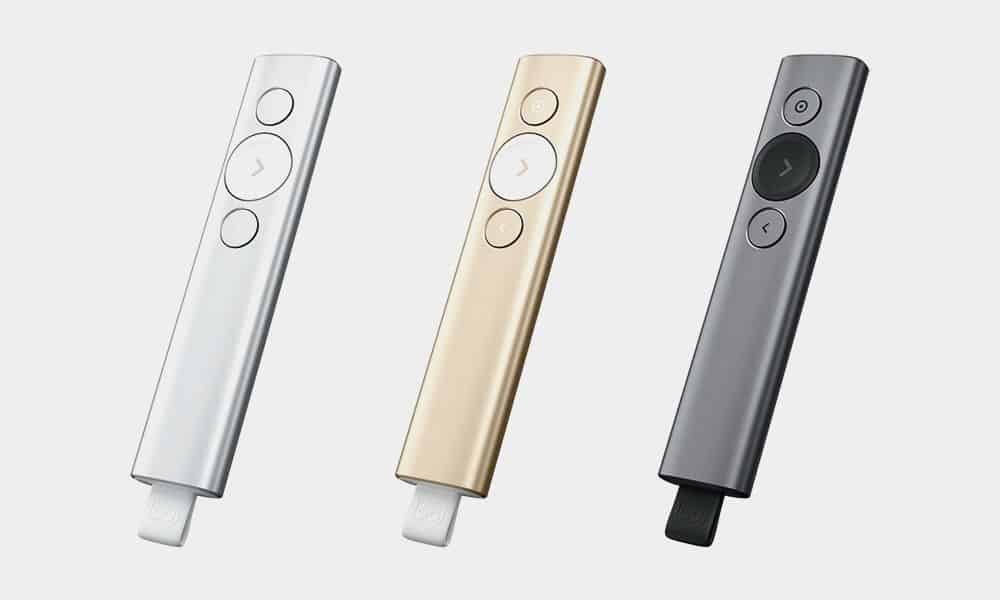
“Oh, cool, so it’s like a virtual ‘laser’ pointer, but without the laser.” Then it hit me… this is actually a big deal.īy virtualizing the pointer, individuals viewing the presentation remotely can also follow along without having to ask the above mentioned “So, what are you pointing at?” The implications are wide-reaching in higher education. So I pressed if for a second or so and the spotlight feature appeared on the screen. But, what was this top button that looked like a laser pointer button? I tapped it, and nothing really happened.
#LOGITECH PRESENTER SPOTLIGHT DOWNLOAD SOFTWARE#
OK, so I went into the software and programmed the forward and reverse buttons, and boom, we had a very nice little remote. After installing the Spotlight software from Logitech’s website and charging the remote via USB C (my MacBook Pro’s power supply worked like a charm), I was still a little stumped. Hmmm, so I broke down and read the instructions (to be clear, there was a VERY clear sticker on the device saying “Download software to activate highlight, magnify, and timmer… but who reads stickers these days?). I connected the fob to my computer and launched an Apple Keynote presentation, and nothing happened. I thought “Gee, that’s an expensive PowerPoint forward/reverse device.” Clearly, I had no clue as to the power that was well masked in this seemingly benign device.
#LOGITECH PRESENTER SPOTLIGHT DOWNLOAD UPGRADE#
I was expecting an elegant upgrade to their previous laser pointers, but it clearly didn’t have a laser. When I opened the package, I really didn’t understand what it was. Even worse, the booming voice of “we can’t see what you’re pointing at!” never blended well with a well-choreographed presentation.Įnter the Logitech Spotlight. Remote participants were usually reduced to looking at the postage stamp sized video feed, occasionally seeing a bit of red flash on the screen. While the laser pointer worked wonderfully with people physically in the room, it didn’t allow remote participants (via WebEx, Skype, Zoom, etc.) to join in the pointing fun.

So, in the late 1990’s the laser pointer was and continues to be, all the rage for presenters.īut as with all things AV, here comes that pesky technology to throw a wrench in our perfect laser stick type device. Also, pointers required that the pointee (I’m not sure if that’s a word) be within three or four feet of the content. But, as classroom technology advanced, traditional pointers simply weren’t large enough to keep up with the ever-increasing screen sizes. Sure, the stick became more uniform, it even evolved to collapse and fit neatly in a pocket protector! But, it was still, in essence, a stick. I’m sure if we went far enough back in time, there was once a person in a cave teaching tribal hunting techniques while pointing at a cave drawing with a stick.


 0 kommentar(er)
0 kommentar(er)
